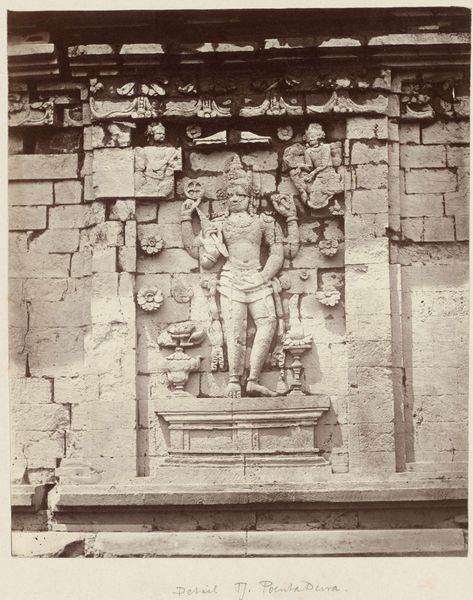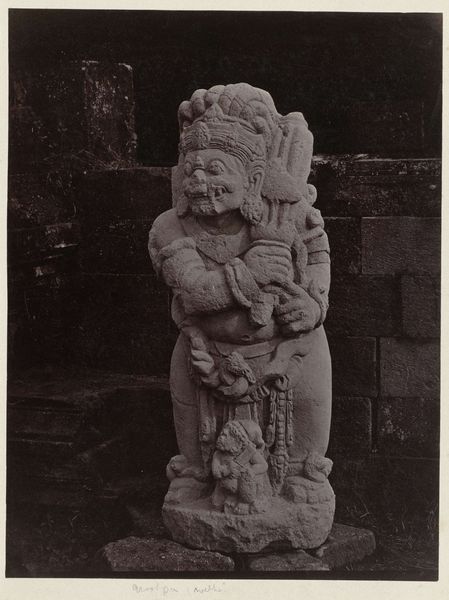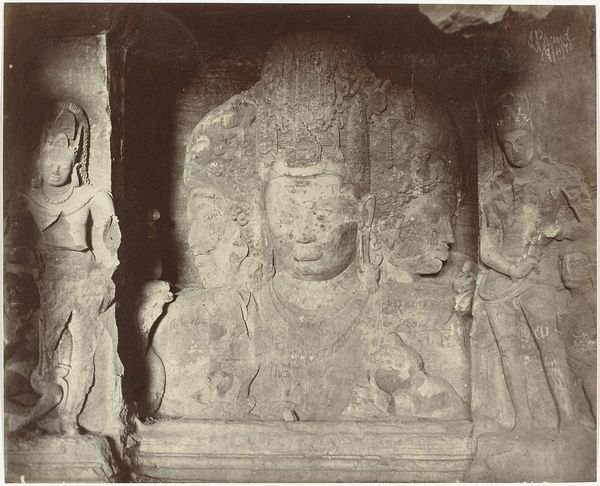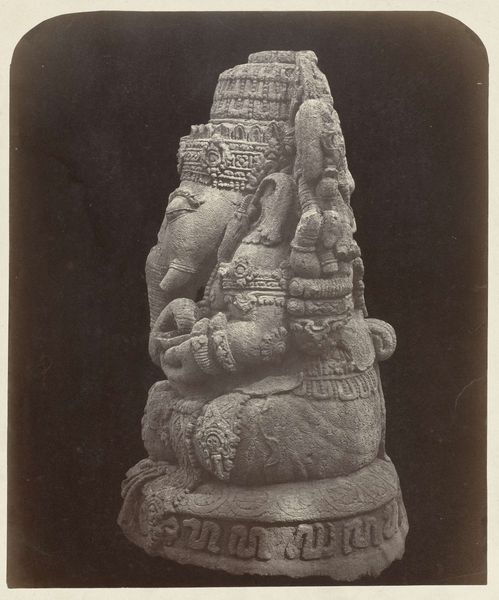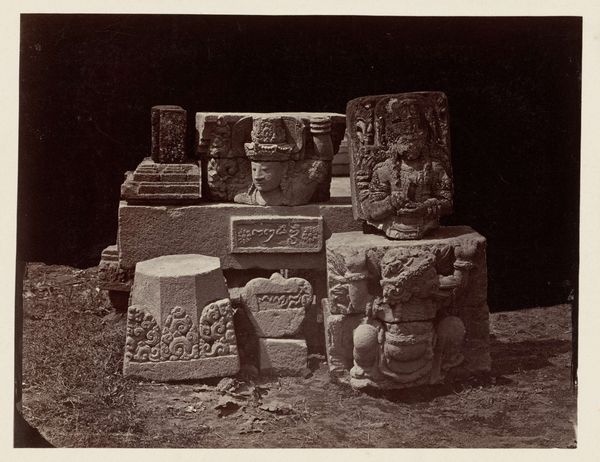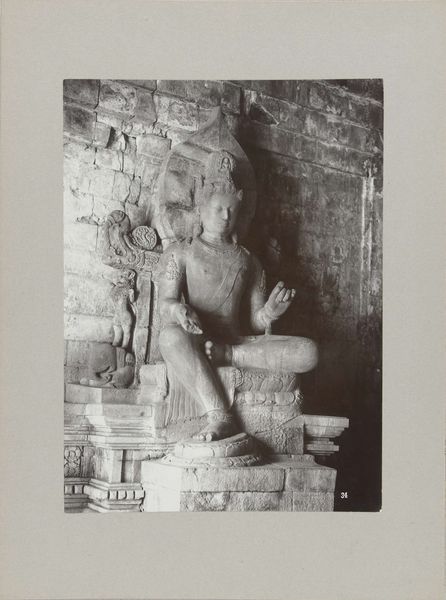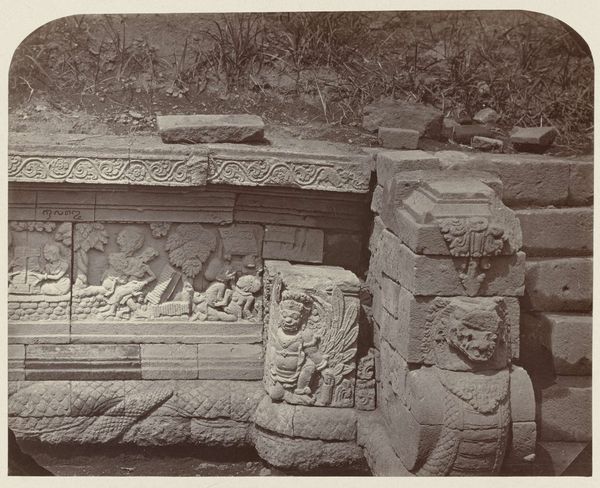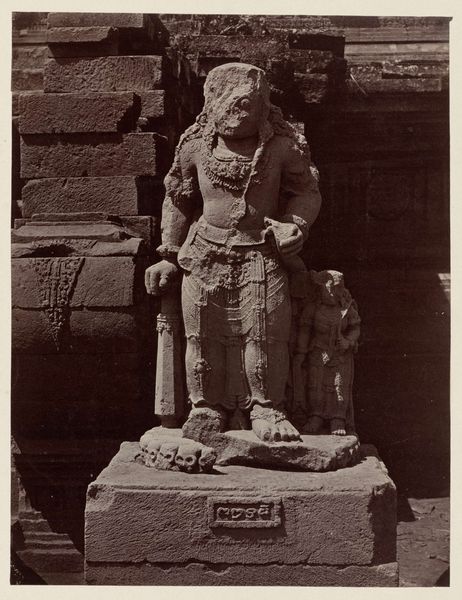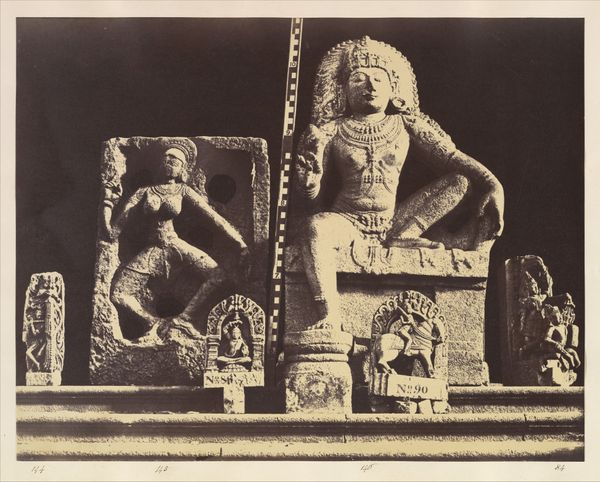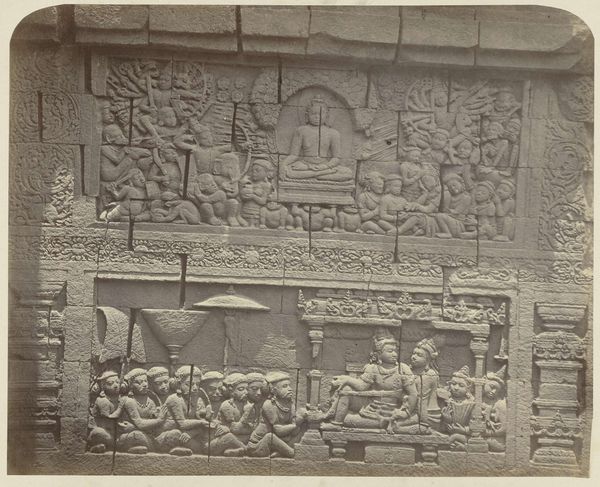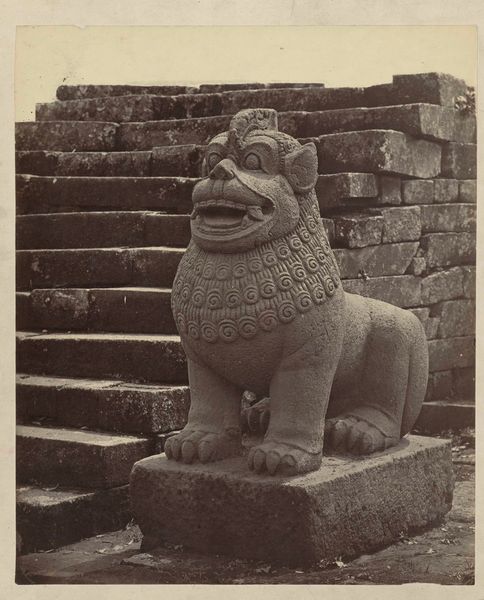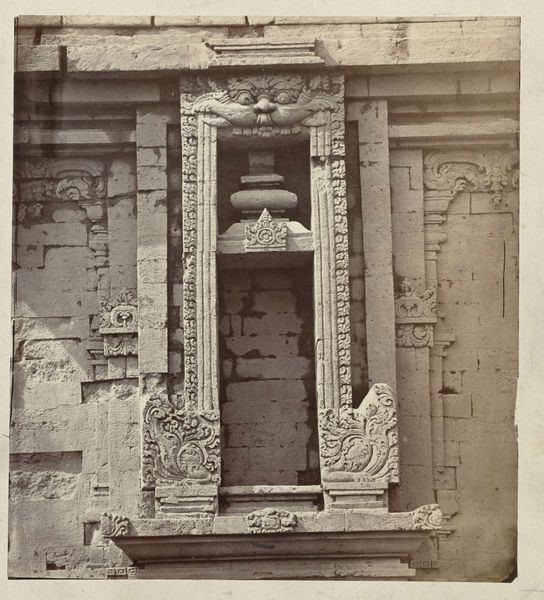
Candi Srikandi, details of the southern niche decorated with a four-armed Brahma. Dieng PLateau, Wonosobo District, Central Java province, 8th-9th century Indonesia Possibly 1864 - 1867
0:00
0:00
photography, sculpture
#
figuration
#
photography
#
ancient-mediterranean
#
sculpture
#
islamic-art
#
history-painting
Dimensions: height 186 mm, width 154 mm
Copyright: Rijks Museum: Open Domain
This photograph captures an 8th or 9th-century detail of Candi Srikandi, a stone temple on the Dieng Plateau in Central Java. The temple, and this niche in particular, is dedicated to Brahma, represented here with four arms. The image was made by Isidore Kinsbergen in the late 19th century. What's fascinating is the contrast between the ancient carving and the then-new technology of photography. The temple itself, built of volcanic stone, displays the incredible skill of Javanese artisans. Notice the precision and depth of the carving, even in this relatively small space. Kinsbergen's photograph, taken centuries later, freezes this moment in time. Both the carving and the photograph involved labor, time, and specific skill sets. The temple was a communal project that would have taken years to complete. Kinsbergen's work too, involved not only technical mastery but a colonial context, which gave him the opportunity to document and, in a sense, claim this cultural heritage through his lens. Paying attention to both the object and its record deepens our understanding, going beyond aesthetics to explore the social and cultural stories embedded in the very process of making.
Comments
No comments
Be the first to comment and join the conversation on the ultimate creative platform.
